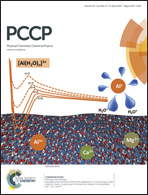Advanced thermoelectrics governed by a single parabolic band: Mg2Si0.3Sn0.7, a canonical example†
Abstract
The well-known single parabolic band (SPB) model has been useful in providing insights into the understanding of transport properties of numerous thermoelectric materials. However, the conduction and valence bands of real semiconductors are rarely truly parabolic which limits the predictive power of the SPB model. The coincidence of the band edges of two parabolic bands, a situation arising in Mg2Si1−xSnx solid solutions when x ∼ 0.7, naturally makes the SPB approximation applicable to evaluate all transport parameters. We demonstrate this in the case of Bi-doped Mg2Si0.3Sn0.7 where the minima of the two conduction bands at the X-point of the Brillouin zone coincide. The combination of a large density-of-states effective mass m* ∼ 2.6 me arising from the enhanced valley degeneracy Nv, high mobility μd due to low deformation potential Ed (8.77–9.43 eV), and ultra-low alloy scattering parameter Ea (0.32–0.39 eV) leads to an outstanding power factor, PFmax ∝ (m*)3/2μd, of up to 4.7 mW m−1 K−2 at around 600 K. The specification and improved understanding of scattering parameters using the SPB model are important and instructive for further optimization of the thermoelectric performance of n-type Mg2Si0.3Sn0.7.


 Please wait while we load your content...
Please wait while we load your content...